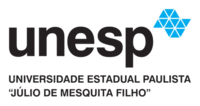USABILITY EVALUATION OF SIMULATORS FOR TEACHING PHYSICS: APPLICATION OF COGNITIVE WALKTHROUGH METHOD
DOI:
https://doi.org/10.18675/1981-8106.v30.n.63.s12950Keywords:
Cognitive walkthrough, Evaluation of educational tools, SimulatorsAbstract
The use of simulators and customized applications for educational use opens new possibilities in the teaching and learning process of the most varied disciplines through computer-mediated interactions (Buzato, 2006). In this context, teachers are developing digital material considering this powerful tool. And the use of educational apps and simulators has increased significantly with the spread of the internet in schools. However, the evaluation of the effectiveness of these applications is complex and incipient (Barroso, Felipe e Silva, 2006). This paper presents a proposed interface usability assessment for the use of simulators with elementary school students using a customized version of the PSSUQ, along with an evaluation by the cognitive walkthrough method (Wharton, Rieman, Lewis and Polson, 1990). The interface chosen was the simple pendulum simulator - part of the PhET simulations package. The results indicated satisfactory usability of the application, although some limitations and usability difficulties were found. Suggestions for applications, future research and recommendations are presented.
References
ALMEIDA, R. X. E. de; FERREIRA, S. B. L.; SILVEIRA, D. S. da; PIMENTEL, M.; GOLDBACH, R.; BESSA, A. T. Heurísticas de Usabilidade Orientadas às Redes Sociais. In: IV ENADI - ENCONTRO DA ADMINISTRAÇÃO DA INFORMAÇÃO, 2013, Rio de Janeiro. Anais [...] Rio de Janeiro, 2013. p. 1-12.
BARROS, A. J. da S.; LEHFELD, N. A. de S. Fundamentos de metodologia científica: um guia para a iniciação científica. São Paulo: MAKRON, 2. ed. ampliada, 2000.
BARROSO, M. F.; FELIPE, G.; SILVA, T. Aplicativos computacionais e ensino de física. Atas do IX EPEF–Encontro de Pesquisa em Ensino de Física, 2006.
BUZATO, M. El K. Letramentos digitais e formação de professores. São Paulo: Portal Educarede, 2006.
FALKEMBACH, G. A. M. Concepção e desenvolvimento de material educativo digital, CINTED-UFRGS, v. 3, n. 1, p. 03-07, 2005.
FERREIRA, S. B. L; NUNES, R. E-usabilidade. 1. ed., Rio de Janeiro, LTC Editora. 2008.
ROCHA, H. V. Da; BARANAUSKAS, M. C. C. Design e Avaliação de Interfaces Humano-Computado. Campinas: Unicamp, 2003.
ROSA, A. F. et al. European Portuguese validation of the Post-Study System Usability Questionnaire (PSSUQ). In: Information Systems and Technologies (CISTI), 2015 10th Iberian Conference on. IEEE, 2015. p. 1-5.
RIEMAN, J.; FRANZKC, M.; REDMILES, D. Usability Evaluation with the Cognitive Walkthrough. CHI’95 MOSAIC OF CREATIVITY, 1995.
SILVA, B. S. da; BARBOSA, S. D. J. Interação Humano-Computador: Projetando a Experiência Perfeita. Rio de Janeiro: Campus, 2010.
LEWIS, C. et al. Testing a walkthrough methodology for theory-based design of walk-up-and-use interfaces. In: Proceedings of the SIGCHI conference on Human factors in computing systems. ACM, 1990. p. 235-242.
MAGALHÃES, E. et al. Impacto da Usabilidade na Educação a Distância: Um estudo de caso no Moodle IFAM. Artigos Industriais. IHC 2010 –IX Simpósio de Fatores Humanos em Sistemas Computacionais, Belo Horizonte, p. 01-06, MG, 2010.
MESQUITA, E. Competências do professor: representações sobre a formação e a profissão. Edições Sílabo, 2013.
POLSON, P. G.; LEWIS, C. H. Theory-based design for easily learned interfaces. Human–Computer Interaction, v. 5, n. 2-3, p. 191-220, 1990.
POLSON, P. G. et al. Cognitive walkthroughs: a method for theory-based evaluation of user interfaces. International Journal of man-machine studies, v. 36, n. 5, p. 741-773, 1992.
WHARTON, C., RIEMAN, J., LEWIS, C., and POISON, P. The cognitive walkthrough method: A practitioner's guide.1994.
WIEMAN C. E.; ADAMS W.K.; PERKINS K.K. “PhET: Simulations That Enhance Learning”, Science, v. 322, p. 683, 2008.
Published
How to Cite
Issue
Section
License
Authors who publish in this journal agree to the following terms:
a) Authors assign copyright to the journal, with the work simultaneously licensed under the Creative Commons Attribution License that allows sharing of the work with acknowledgment of authorship and publication in this journal.
b) The policy adopted by the Editorial Committee is to assign copyright only after a period of 30 months from the date of publication of the article. After this time, authors interested in publishing the same text in another work must send a letter to the Editorial Committee requesting the release of the assignment of copyright and wait for a response.
c) This journal provides public access to all its content, since this allows greater visibility and reach of published articles and reviews. For more information on this approach, visit the Public Knowledge Project, a project that developed this system to improve the academic and public quality of research, by distributing OJS as well as other software to support the public access publication system to academic sources. The names and email addresses on this website will be used exclusively for the purposes of the journal and will not be available for other purposes. This journal provides open any other party  This work is licensed under a Creative Commons License
This work is licensed under a Creative Commons License










